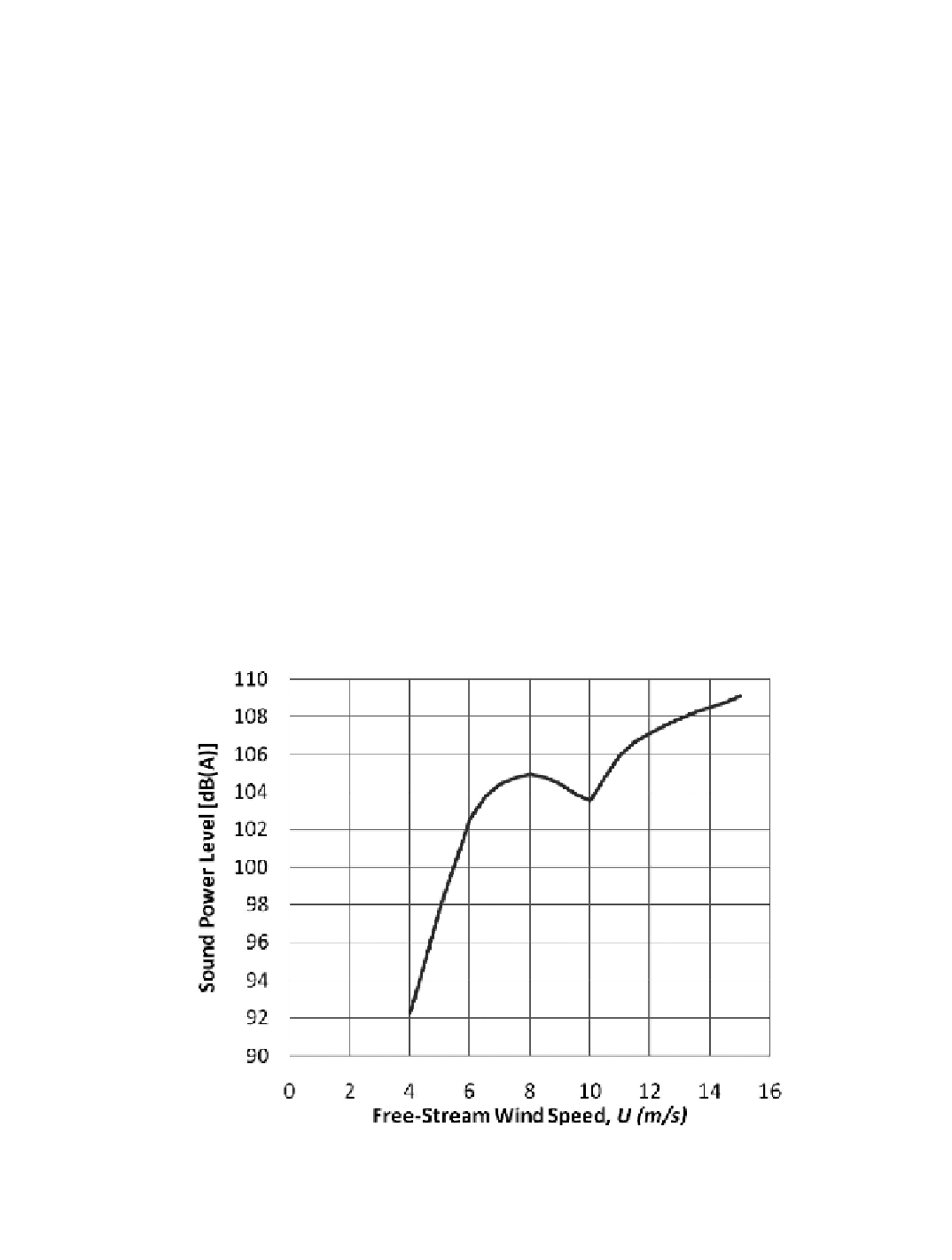Environmental Engineering Reference
In-Depth Information
turbine is a point noise source and (b) that its sound power spreads outward over a spherical
surface. Sound power level is related to sound pressure level as follows:
PWL
=
SPL
+ 10 log
10
(
a R
2
/
A
0
) + a(
R
/100) +
b
p
(7-12)
where
a
= propagation shape factor
= 4 for spherical spreading
free-field
or above an ideally absorbing or anechoic
surface
= 2 for hemispherical spreading above an ideally reflecting (hard) surface
R
= slant distance from rotor center to microphone or meter (m)
A
0
= reference area of sound source, 1 m
2
a = atmospheric absorption rate (dB per 100m)
b
= empirical microphone correction constant (dB or dBA)
= - 6 dB recommended for a microphone located on a ground board [IEC 1998]
Figure 7-26 illustrates the relative decrease in sound pressure levels assuming four different
atmospheric absorption rates, a, varying from 0 to 0.54 dB per 100m.
Sound Power of Utility-Scale Wind Turbines
According to Howe
et al.
[2007], modern wind turbines are considerably quieter than
earlier versions, with some investigators finding a reduction in recent years of about 10
dB. While different models and different manufacturer's systems have their own acoustic
characteristics, various investigators indicate that sound power levels of 105 dBA are typical
for modern wind turbines in the 1 to 2 MW range at moderate wind speeds (Fig. 7-42).
Figure 7-42. Typical sound power levels of modern 1 to 2 MW wind turbines as a func-
tion of wind speed.
[Howe
et al.
2007]

Search WWH ::

Custom Search